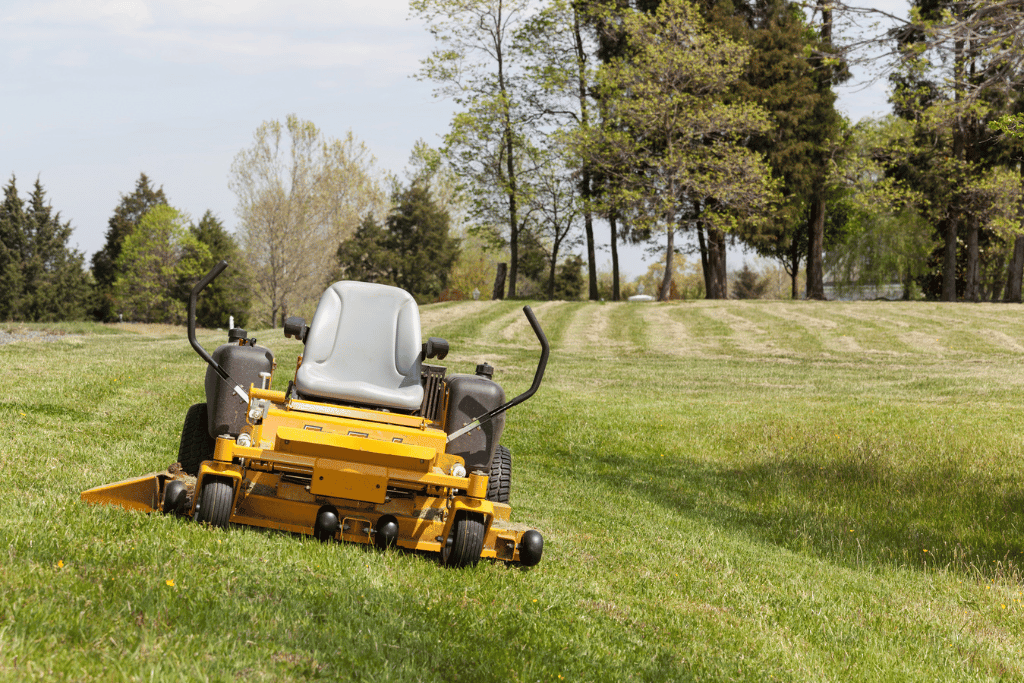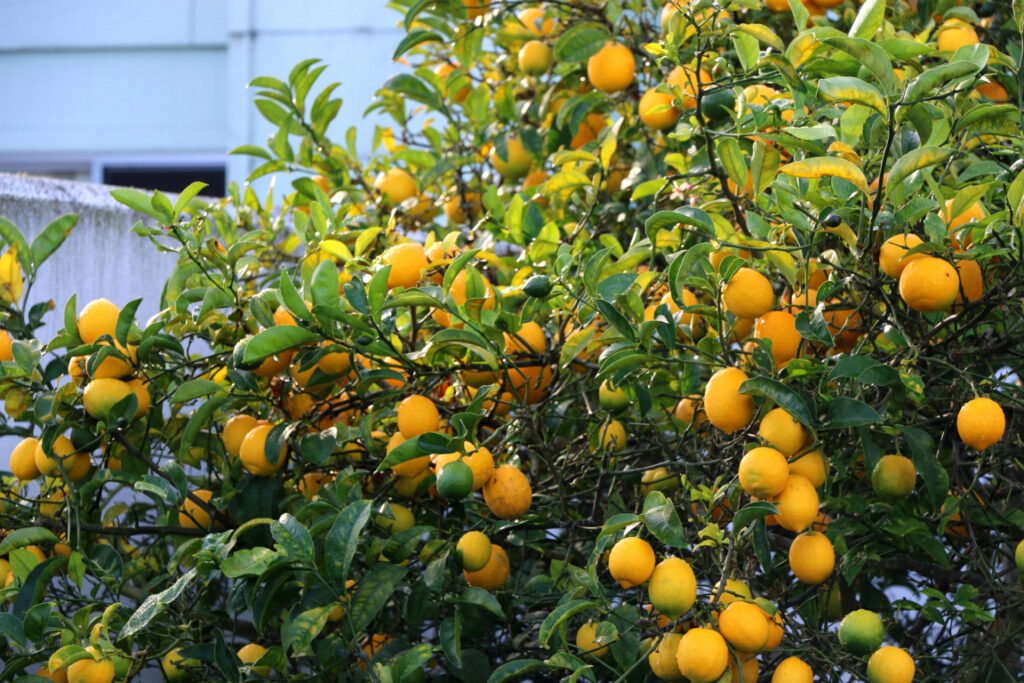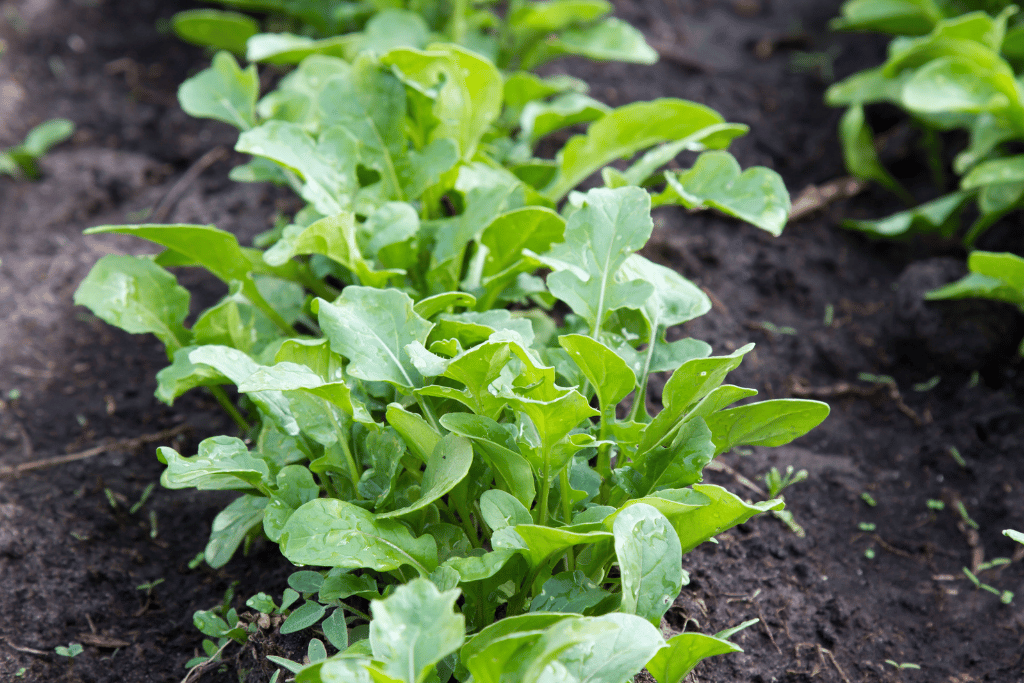
Arugula just may be my favorite green salad ingredient.
It has a flavor like no other, a distinct peppery zip that makes any dish instantly more exciting.
The cool-season green grows best early in the spring and late into fall, when it avoids pest pressure and long, sunny days.
A surefire way to get the most out of your arugula is to pair it up with the right companion plants. There’s a long list of fruits, vegetables, flowers and herbs that will significantly enhance the health and flavor of your arugula.
Arugula as a Companion
As far as greens go, arugula is rather resilient. It establishes quickly, growing into a rosette that continually produces spiky, spicy green leaves. To further protect and nourish your arugula consider intercropping some of the plants on this list.
Beets
Neither beets nor arugula mind growing in tight spaces. Maximize available garden space by planting them in alternating rows early in the spring. As the weather warms up and beets mature, their tall greens will provide a bit of shade for the arugula. By the time summer rolls around both crops can be harvested, opening up room for a fall planting.
Beans
Plants that fix nitrogen into the soil are especially admired by leafy greens like arugula. Beans will do just that, giving arugula the juice it needs to produce a lot of extra flavorful foliage.
Beans that like the hot weather will be full and productive in the summer months. It is the perfect time for arugula to catch some shade and attempt to extend the season before bolting during the long, sunny days.
Radishes
Arugula and radishes make a perfect combination in the spring or fall garden. They both grow at rocket speed and are the perfect ingredients for a spicy salad, embodying the earthy essence of a cool-season garden.
Radish greens tend to attract flea beetles, which typically attack arugula. Damage inflicted on radish greens isn’t a big deal making them the perfect diversion from your arugula.
Radishes grow so fast that you may be able to cycle in multiple harvests per year when planted among arugula. And rumor has it that radishes, when closely planted to arugula, won’t turn woody in texture.
Lettuce, Spinach and Swiss Chard
All the cool-season leafy greens love to chill together. They grow at about the same rate, require similar conditions and can easily be interplanted.
Dedicate your own salad green garden by blending all the seeds together and sowing them indiscriminately over a prepared bed. The combination of colors, textures and flavors will liven up any salad bowl.
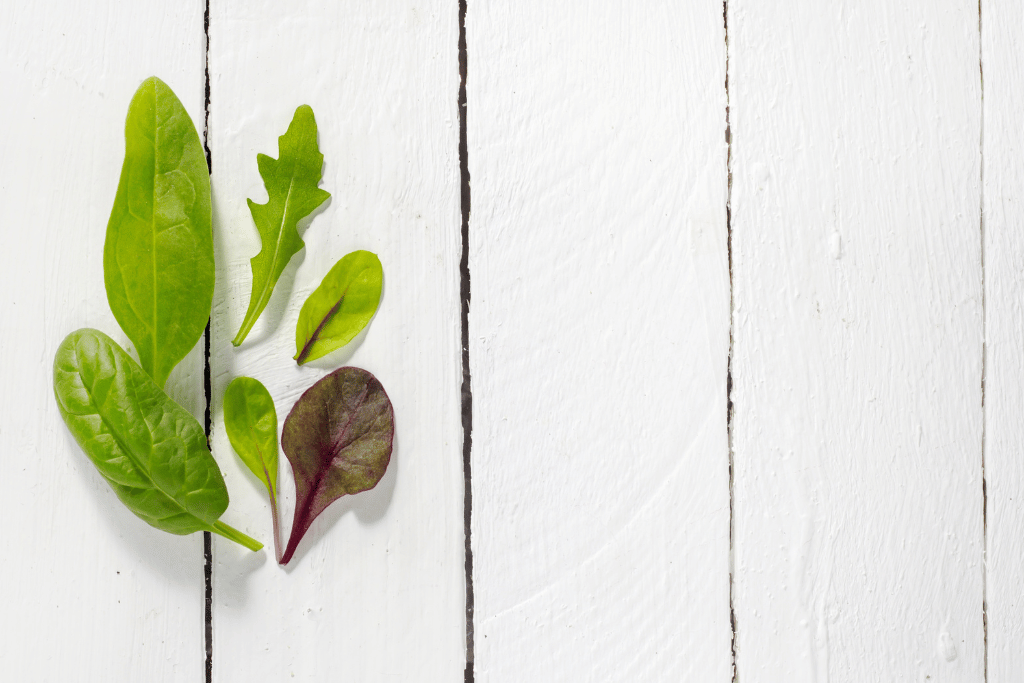
Mint
The potent, menthol aroma of mint drives pests crazy. Many herbs in the mint family (peppermint, spearmint, lemon balm, lavender, basil, oregano) share the valuable attribute of containing pest-repelling essential oils.
If planting mint near arugula, be careful. Mint grows aggressively and can quickly overtake plants that aren’t established. Keep containers of mint in the vicinity of your arugula to get the benefits and avoid the risk.
Cucumbers
If too much open space is kept between rows of arugula, you can bet that aggressive weeds will attempt to move in and compete for resources. To prevent this from happening, after arugula is established sow cucumber seeds in between rows. Cucumber vines will cover the ground, smother weeds and keep the soil moist and cool.
Brassica Vegetables
Members of the brassica genus typically grow big, broad and tall as they mature. Arugula happily grows alongside crops like kale, broccoli and Brussels sprouts early in the spring or late into the fall. Brassica roots feed heavily but grow deep and won’t disturb the surface where arugula resides.
When the brassicas mature midseason, they will provide a bit of protection along with some needed shade for the heat-vulnerable arugula greens.
Alliums
Onions, garlic, chives and leeks are the great garden protectors. Even if you can’t stand the taste of these pungent vegetables, they’re worth adding to your garden for their pest-repelling abilities alone.
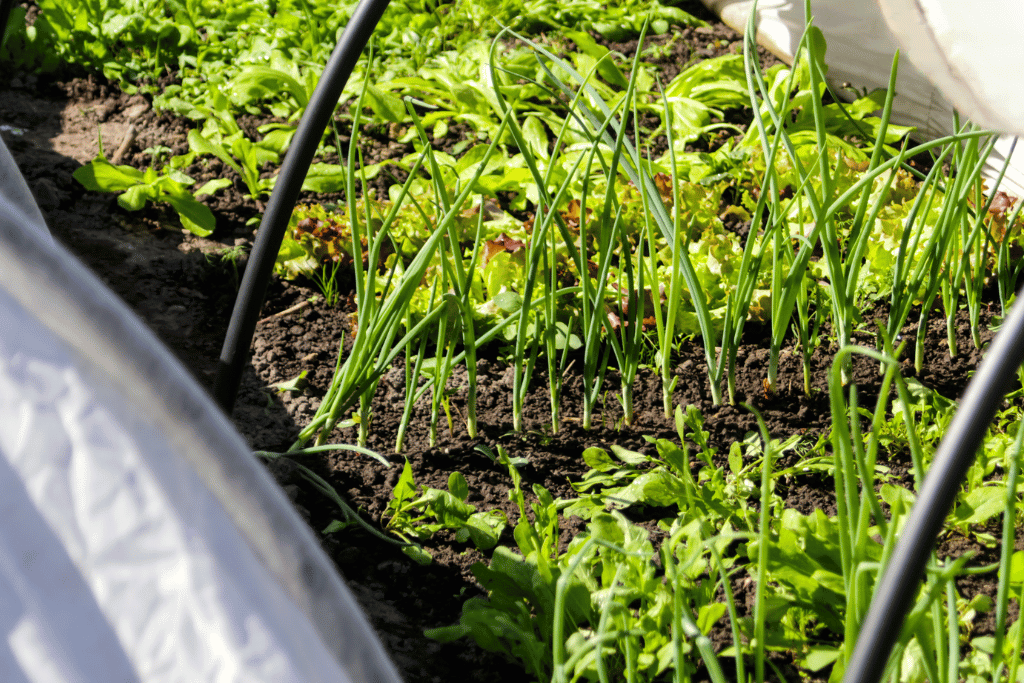
Chamomile
Dainty, white daisy-like chamomile flowers are a welcome sight in any garden. More inspiring than their visual elegance is the fantastic aroma they exude.
Conveniently enough, this same fragrance keeps away common arugula pests and will also attract predatory beneficial insects.
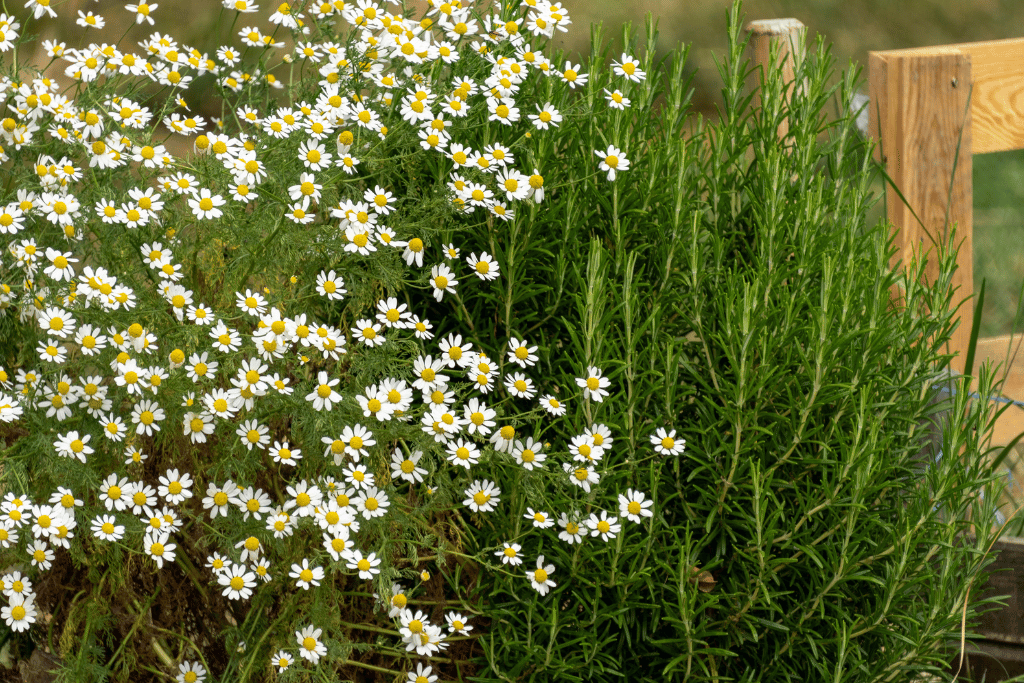
Various Herbs
Rosemary, dill, basil, thyme, parsley, cilantro, oregano and borage are all reliable companion plants. The strong aromas they produce is a defense mechanism generated from their natural essential oils. It’s what gives these herbs medicinal, antibacterial, antifungal and pest-repelling properties.
You can’t go wrong with keeping plenty of herbs dispersed throughout the garden; they will certainly deter pests, invite welcome visitors and help to keep your arugula healthy.
What NOT to Plant with Arugula
Unfortunately, arugula doesn’t play nice with every plant. It’s important to know what not to grow next to your arugula crop.
Tomatoes, Peppers, Eggplant and Potatoes
Members of the nightshade family just don’t jive with arugula. It’s nothing personal, they just prefer more acidic soil (pH 5.5-6.5) than arugula (pH 6.5-7.) Plenty of other plants that fit into that range can be planted alongside arugula.
Strawberries
Everybody’s favorite bright red June berry does not get along with arugula. Strawberries tend to spread out and cover the ground via their runners. They won’t provide any summer sun relief and will just get tangled and obstruct the growth of arugula. Don’t plant any arugula in a designated strawberry patch, it won’t work out.
Fennel
The enemy of all and companion to none, fennel will only disrupt the development and growth of your arugula. Keep fennel in its own separate section.
Frequently Asked Questions (FAQ)
How much space does arugula need?
Arugula doesn’t need much space to give a continuous supply of greens. Space plants about a foot apart, or move them in closer if you want to harvest them as baby greens. To maximize space, intercrop other greens, radishes, or beets between arugula rows.
Can arugula be harvested more than once?
Yes, it can. Harvest the outer leaves of bigger bunches or cut all the leaves, leaving couple of inch stubs. New leaves will continually grow from the base of the plant as long as it remains cool, shaded and watered.
After bolting, bitter leaves and stems can be whipped into a pesto.
How do I prevent my arugula from bolting?
Constant harvest of the leaves will help keep your arugula from bolting. Picking leaves and cutting it back will encourage new vegetative growth.
When the weather starts to get warm, make sure your arugula gets afternoon shade and the soil and roots remain cool.
Can I grow arugula in a pot?
Yes, arugula is completely content growing in a container. The roots don’t require very deep soil and it will appreciate having its own space. Containers of arugula can easily be harvested and transported when hot, sunny weather threatens. Grow some indoors or on your patio or porch for easy access to tasty salad greens.


